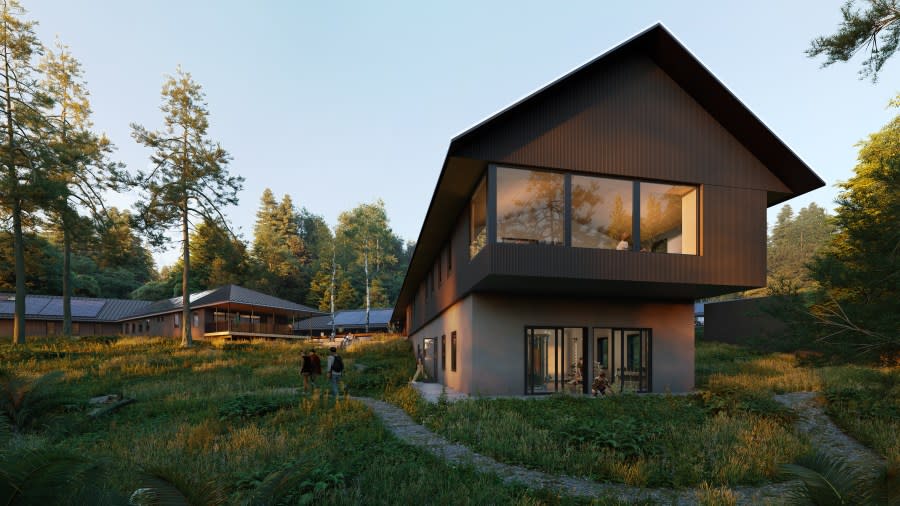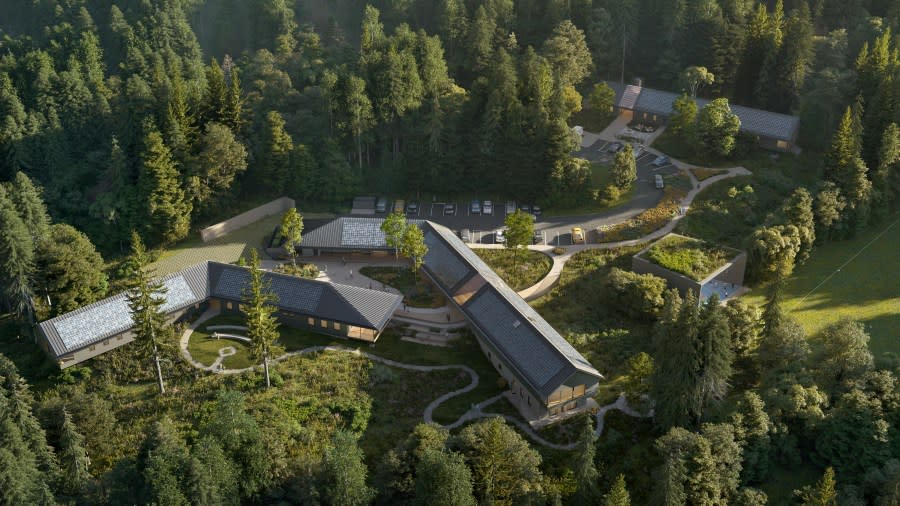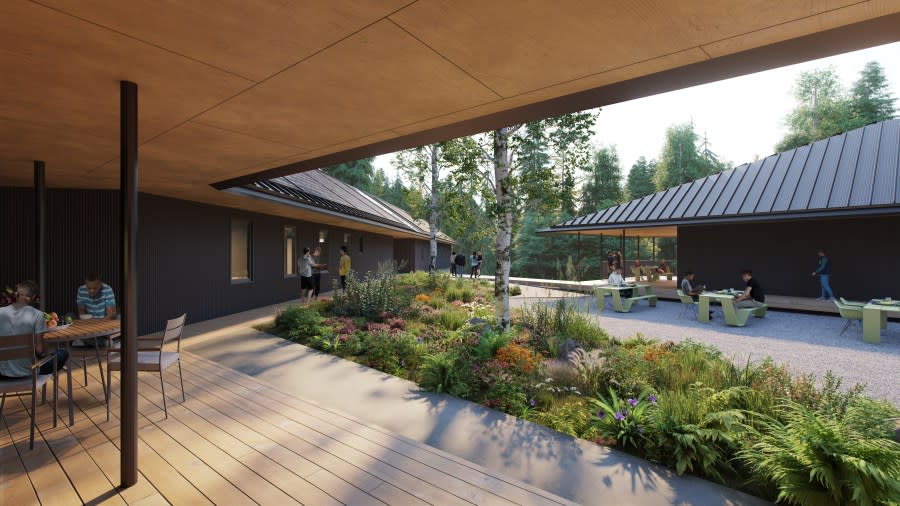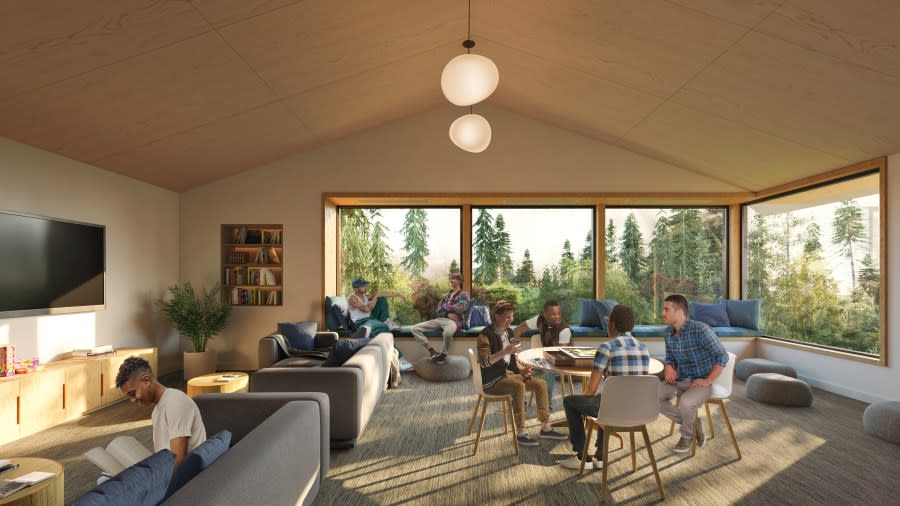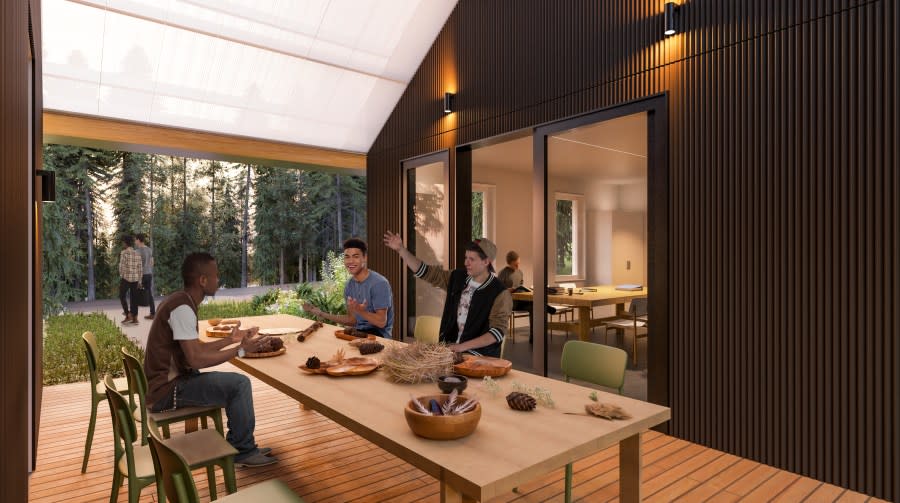‘Vital’ new treatment center for high-risk kids seeks $8 million in funding from Oregon lawmakers
PORTLAND, Ore. (KOIN) — Construction has begun on a new youth treatment center just outside of Oregon City.
Parrott Creek Child and Family Services promotes designing youth treatment centers that are intertwined with nature, focused on community spaces for relationships and learning, plus giving kids a cozy room, so they feel safe and welcome.
Leaders of the effort say youth treatment centers are critical in a state like Oregon, which consistently ranks at the bottom of the list for teens in crisis.
Portland Timbers end sponsorship with DaBella as CEO faces sexual harassment allegations
Simon Fulford, the executive director at Parrott Creek Child & Family Services, leads programs addressing complex issues in children, such as crime, mental health and trauma, all of which are often worsened by addiction. He says clear messaging on drug prevention is crucial and that clarity on that messaging is lacking in Oregon.
“I would say some of the struggles in Oregon is there seems to be a lack of vision to what is really possible and what do we really want for our kids,” Fulford said. “Kids are struggling with confused messaging around the legality of drugs, whether it’s the marijuana laws or Measure 110. Kids are a little confused. What is legal, what isn’t? Are drugs bad for me? Are they not?”
The absence of a clear early intervention strategy prompts youth treatment providers like Fulford to urge lawmakers for a more comprehensive prevention vision in this legislative session. Fulford has criticized lawmakers for solely focusing on Measure 110 and adult treatment while neglecting Oregon’s at-risk children. He emphasizes the need to prioritize high-risk kids to prevent perpetuating cycles of hardship.
“No leadership has said ‘here’s the marker in the sand. Here’s what we really want to achieve for kids,”‘ he said. “The kids that are in these kinds of systems of care kind of get treated like third-class citizens. What we are trying to do is re-envision and reimagine what that care looks like, both in how you work with a child, but also the physical environments, the nature that you give them access to.”
Renditions of the Parrot Creek Treatment Facility. (Courtesy: Parrot Creek Child and Family Services) Renditions of the Parrot Creek Treatment Facility. (Courtesy: Parrot Creek Child and Family Services) Renditions of the Parrot Creek Treatment Facility. (Courtesy: Parrot Creek Child and Family Services) Renditions of the Parrot Creek Treatment Facility. (Courtesy: Parrot Creek Child and Family Services) Renditions of the Parrot Creek Treatment Facility. (Courtesy: Parrot Creek Child and Family Services)
Robbie Leggett, Parrott Creek’s capital campaign director, is leading the effort to raise money to build the treatment center. He knows what it’s like to grow up in a poorly funded facility, after a traumatizing experience at a group home in his youth in South Dakota.
“I think a lot of the kids felt more like, I guess for lack of a better term, like livestock. They didn’t feel like real human beings,” Leggett said. “And I think that really illustrates the importance of the proper amount of funding and treating kids like they actually are kids.”
Kids who go through systems of care in Oregon are used to waiting months to receive treatment, only to be put in old, institutionalized environments.
“It’s almost like jail settings. Fluorescent lights, cinderblock, everything echoes,” Leggett said. “It makes a much bigger difference than you would think. The physical spaces are really important.”
Providers say it’s not enough to take aging buildings and paint the walls blue. It’s time to realize how the physical environment has an impact on the emotional well-being of kids in treatment. But finishing this construction within a year will require an $8 million investment from lawmakers.
State Rep. Ed Diehl has played an instrumental role in helping Parrott Creek build the treatment center.
“We can do a much better job in Oregon helping youth that are struggling,” said Diehl. “When you talk about dignity and respect, this is a place that’s going to make kids who are coming from pretty rough spots feel like real people — feel that they’re loved, feel that they’re cared for.”
Diehl believes in the old saying that “an ounce of prevention is worth a pound of cure,” and is hoping that the sooner people are treated, the better outcomes they will have later in life.
“The studies I’ve seen and heard say a dollar invested in youth is worth $8 down the road,” he said.
State Rep. Annessa Hartman also said that she believes in Parrot Creek’s vision and is committed to supporting their funding request.
“Given their incredible track record, their vision to set a new standard in youth residential treatment is ambitious but achievable,” Rep. Hartman said. “They have an 88% success rate among participants, with the majority meeting their treatment goals and feeling real progress in their lives.”
After leaving their care, Parrott Creek’s children have half the reoffending rate compared to the state average.
“This project is particularly vital as Oregon grapples with significant challenges in youth and drug treatment services. This project is about believing in our kids and giving them the tools to succeed, no matter their start in life. I wholeheartedly support Parrott Creek’s vision—I’m proud of the healing they’ve provided and am excited for what’s next,” she said.
The goal of this foundation is to fundamentally change the lives of kids who are struggling with behavioral health and addiction and rewrite a different story.
“It’s significantly easier for a 16-year-old kid to take a year-and-a-half off from life, so to speak. To be able to work through issues like that. Whereas an adult in their twenties, it’s extremely difficult to do when you have kids, a mortgage, et cetera. So getting this help and these services to kids when they’re a lot younger is much more effective and it’s much better for them in the long run,” Leggett said.
The $8 million decision is currently before the Ways and Means committee as a capital project requested by Deihl. Around 10 other representatives and senators have bipartisan and bicameral support for it.
If the funding is approved, they’d be able to start opening in January of next year. If it’s not approved, construction could be pushed back into 2027.
For the latest news, weather, sports, and streaming video, head to KOIN.com.
